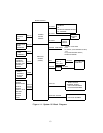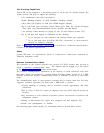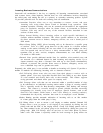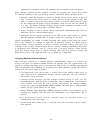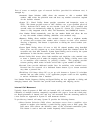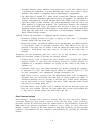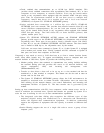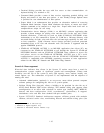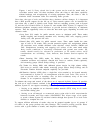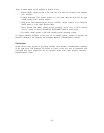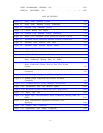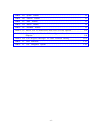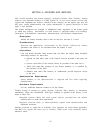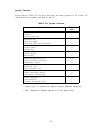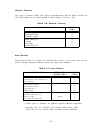Figures 1 and 2.) Every circuit slot in the system can be used for trunk cards or
voice/data station cards. All these attributes allow the client to add future capability
without breakage and re-engineering of existing equipment. Thus, the client is able to
minimize initial investment while not restricting future growth.
Over time, the type of tools and facilities that a business utilizes changes. It is important
that a PBX provide support for the full set of Telco network options over its installed life,
even when only a subset is initially used. Trunks link two switching systems, such as System
25 and the local Central Office or System 25 and another PBX. System 25 supports five
different telephone company trunk interfaces to provide desired connectivity at minimum
expense.
Thus the opportunity exists to select the best trunk types, depending on tariffs and
customer needs.
● Loop Start (LS) trunks for public network access at minimum tariff. These trunks
handle outgoing and incoming attendant calls, incoming DGC calls, outgoing pooled
facility calls, and personal line calls.
● Ground Start (GS) trunks for public network access. These trunks handle the same
type of calls as LS trunks. They provide protection against call reorigination without
toll restriction, more reliable automatic route selection, virtual facilities, SMDR and
CAS. Simultaneous incoming and outgoing call seizure of the same trunk under
heavy traffic conditions is essentially eliminated with ground start trunks. GS
trunks should usually be selected in preference to LS trunks unless tariff
considerations are overriding.
Note, however, that Centrex Service requires LS
trunks.
● Direct Incoming Dial (DID) trunks for dialing a station directly from outside
(attendant assistance not required). Outside dial access to stations, trunks (optional),
and answering groups (Direct Group calling) is provided.
● Tie Trunks for linking PBXs with dedicated private circuits for high volume calling.
Dial access to stations, other trunks, answering groups (Direct Group Calling) and an
Electronic Tandem Network endpoint capability are provided.
● Off-Premises Stations (OPS) allow a single-line voice terminal to be located remotely
and connected to System 25 via arrangements with the local Telco. This service is
used to provide users at secondary sites (or their residences) many of the same
features as an on-premises single-line station.
To enhance the usage and control of the above set of network facilities, System 25 provides
the rich set of access features outlined in the Outgoing Business Communications Section. In
addition, System 25 can support networking between systems by:
. Serving as an endpoint on an electronic tandem network (ETN) using its tie trunks
and flexible dialing plan.
. Serving as an off-network or on-network access point with its dial access/transfer
between tie-trunks and Telco trunks (LS/GS/DID). This allows usage of tie trunks
to reach a distant System 25 and then connect through that System 25 to local Telco
facilities to complete the call.
To support efficient utilization of trunks, they can be grouped together (up to 16 groups) if
all trunks in the group perform the same function. This resource pooling provides better
service with a given number of trunks, and simplifies administration and calling.
1-11



